The Next Stage
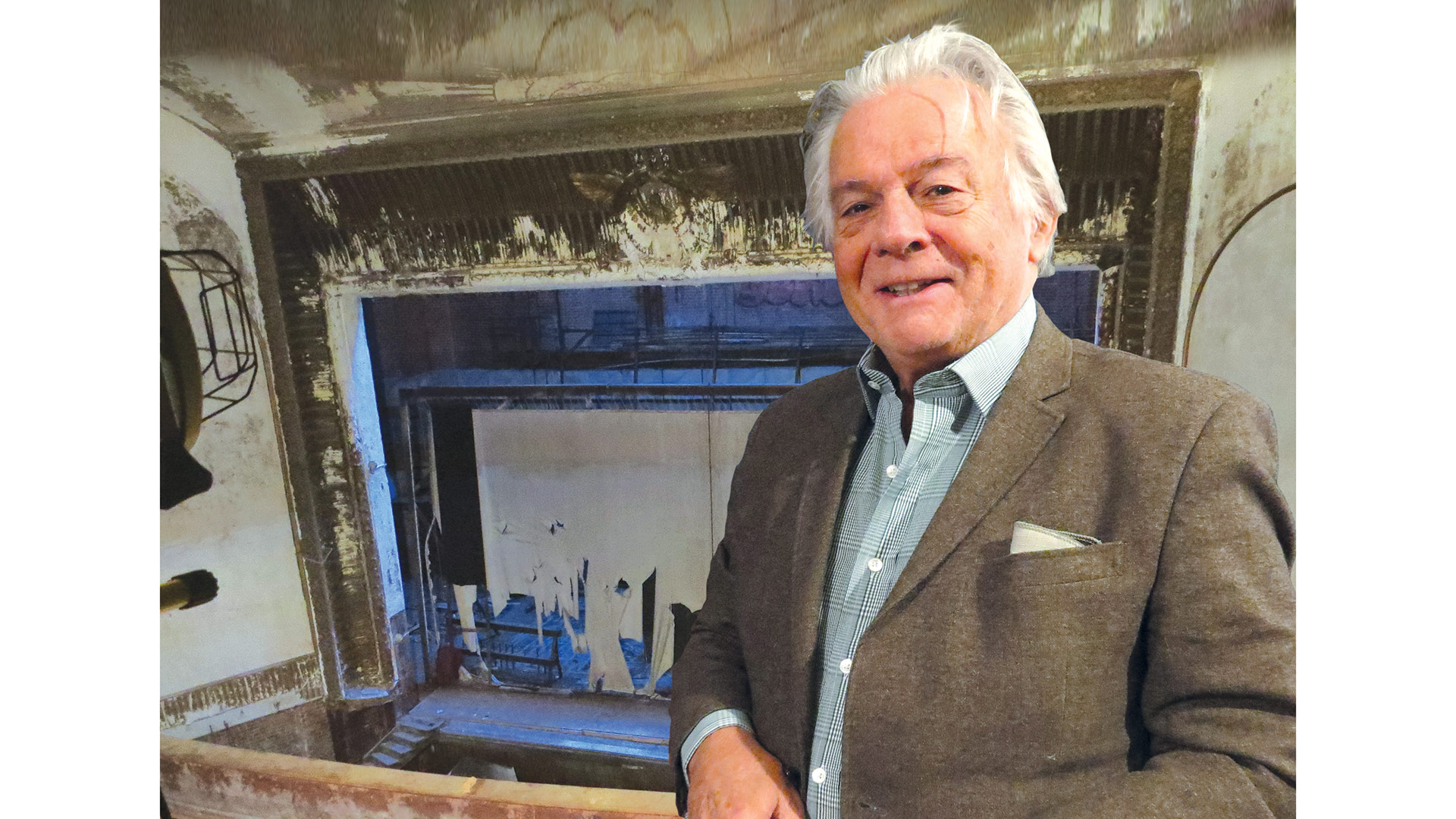
Donald Sanders, executive artistic director of MIFA Victory Theatre
When asked how many tours he’s given of the Victory Theatre in Holyoke, the landmark that went dark in 1979, Donald Sanders gave a hearty laugh — something he does often — and just shook his head. That was his way of saying ‘more than I could count.’
Those tours have been given to elected officials, economic-development leaders, city department heads, arts groups, members of the media … you name it. They’ve all been in for a look at this piece of history that a city, and a region, have been desperate to renovate and make a part of the future, not merely the past.
And while the tours given today are essentially the same as those given years or even decades ago — they go everywhere from the front lobby to the mezzanine to the stage area — there is a new sense of urgency, optimism, and, yes, momentum — with these visits, said Sanders, executive artistic director of MIFA Victory Theatre, which has been at the forefront of efforts to restore the theater for the past 20 years.
Indeed, over the past several months, there has been a new tone to the discussions about restoring the 1,600-seat facility back to a Broadway-style theater. Specifically, there is a growing sense, after more than 40 years of talk, that this project is real.
“It’s more than just arts and culture; it’s really about impact to community and the secondary impact it offers.”
“I’ve always been optimistic that this could happen, but now, there is greater reason for optimism,” said Sanders, noting that MIFA (the Massachusetts International Festival of the Arts) acquired the Victory Theatre from the city in 2009 and has been committed to its revival since because it region’s best option for bringing large Broadway shows back to the Pioneer Valley. “There is a greater sense of momentum now than perhaps ever before.”
Several factors have contributed to this momentum — everything from a visit to the theater by gubernatorial candidate Maura Healey back in late June to a recent bus trip to Schenectady, N.Y. to take in the restoration of the Proctors arts complex, a project that is similar in many ways to the Victory initiative, to progress with the closing of a persistent funding gap thanks to federal ARPA money.
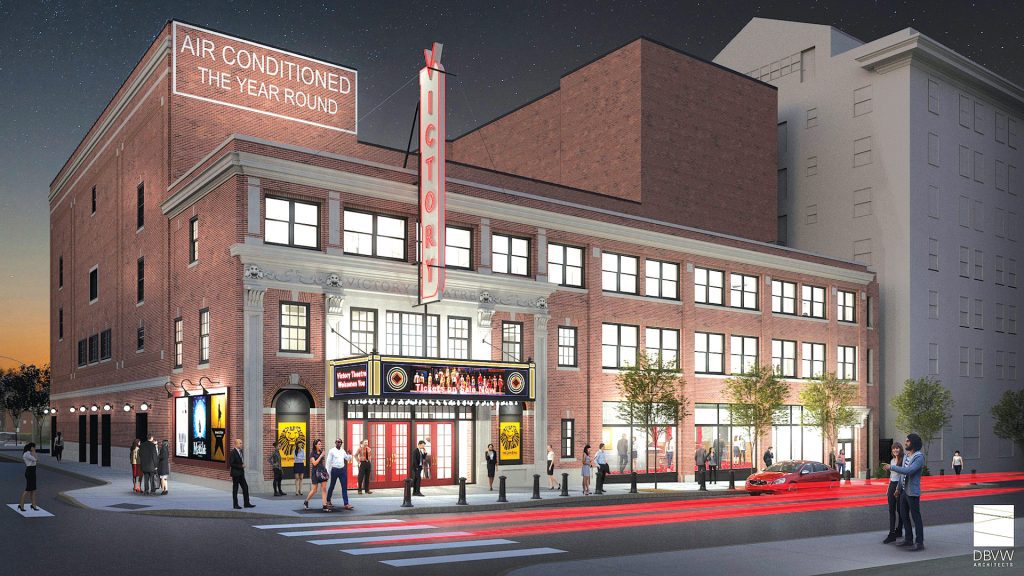
An architect’s rendering of a renovated Victory Theatre.
Some of that money has been aside for “transformative projects” in communities, said Sanders, adding that he and others have long been making the case that a restored Victory Theatre hosting Broadway shows and other large events can and will have a transformative effect on the local economy.
But there are other factors as well, said Susan Palmer, a principal with the Palmer Westport Group, which focuses on strengthening and developing fundraising and leadership capacity of theaters across the country.
She has consulted on a number of projects aimed at bringing formerly dark theaters back to useful life, and she credits the leadership in Holyoke, and especially Joshua Garcia, the city’s first Puerto Rican mayor, with injecting some needed energy and confidence in the Victory Theatre project.
“He has been fearless; he has been relentless,” said Palmer, who was a theater producer at Barrington Stage in Pittsfield and also worked at Jacob’s Pillow, the Colonial Theater, and the Berkshire Theatre Festival before launching her consulting firm in 2005. “He has a three-legged stool of priorities for the city; he wants to increase and improve the housing stock, he wants to improve educational outcomes, and he wants Holyoke to be the center of economic revitalization in that area, and he feels putting the Victory Theatre back in service is a key to that.”
Garcia, who has put together a strike force (led by his wife, Stephanie) to keep the focus on the project and raise funds within the community for the efforts, said the theater project is, indeed, a key element in efforts to revitalize the city and its downtown and bring new businesses and vibrancy to the community.
The theater has been closed since before he was born, but its importance to the city, from a cultural, economic-development, and pride standpoint, is certainly not lost on him, and he believes the remaining hurdles to restoration of the Victory can be cleared.
“This project is in the ninth inning, as I like to say, and we have a short window to close the funding gap,” Garcia said. “The gap is $15 million to $20 million, but a very clear and doable path has been identified.”
He said the trip to Schenectady, during which participants got to take in a performance of Aladdin, showed not only what can be done to restore a landmark, but what doing so means for the community.
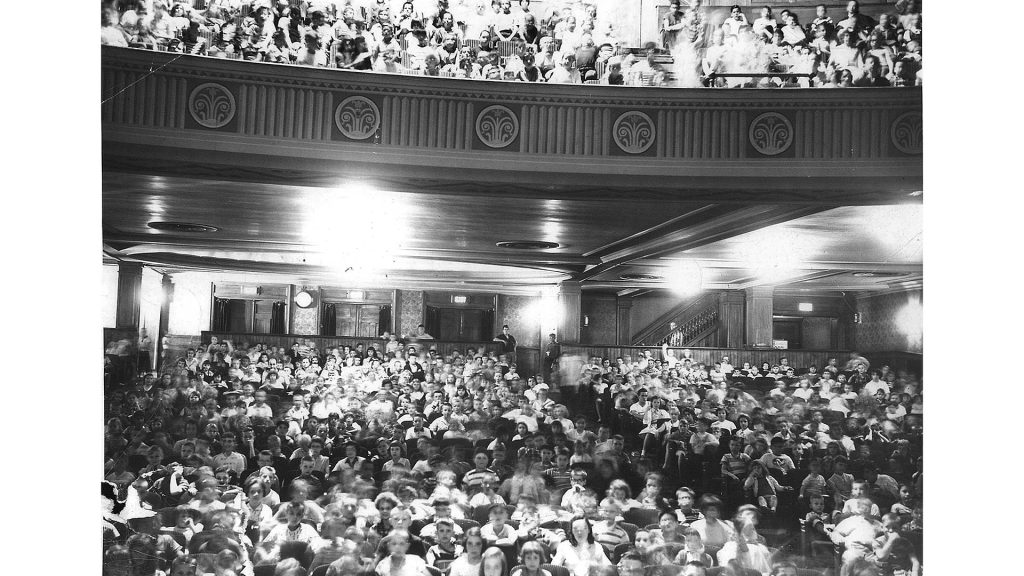
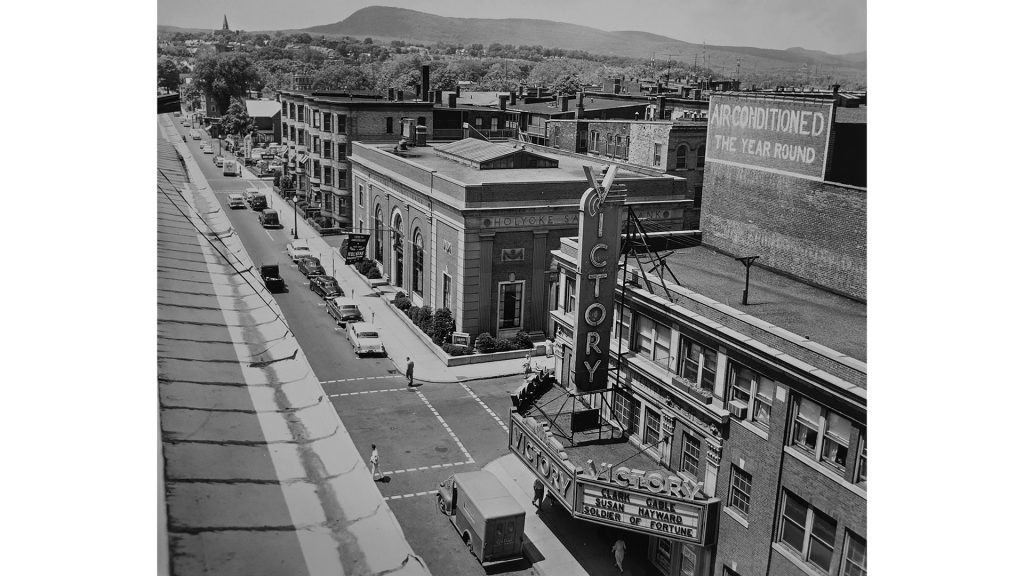
At top, children watch a movie at the Victory Theatre in the ’70s. Above, a view of Suffolk Street and the theater from 1955.
“It was such an eye-opening experience to know what Schenectady has been able to accomplish with their community,” he said. “It’s more than just arts and culture; it’s really about impact to community and the secondary impact it offers; their story felt very similar to ours.”
For this issue, BusinessWest takes an in-depth look at the Victory Theatre project and at how those involved believe that now, more than 40 years after the last movie was shown there, there is sufficient funding, and momentum, to get this initiative over the goal line.
Marquee Moments
Palmer told BusinessWest that she has been involved with several theater-restoration projects, including the Colonial Theatre in Pittsfield, a project credited with helping to revitalize a city that had been devastated by the loss of its largest employer, General Electric.
While all of these initiatives differed in some ways, there was a common denominator: time.
Indeed, almost all of these projects took several decades to complete, she said, adding this is an element that is often overlooked in some communities undertaking such initiatives, including Holyoke.
“They all take a long time,” she said. “But the people who are working in these individual communities are only working on their project; they don’t realize that they’re in a pool of companions who have experienced the same thing.
“I worked on one in Ohio, the Woodward Opera House, that took 33 years. So there are two generations of people who have been involved with that. I was brought in in the last three years, and I would talk to people who would say, ‘my parents were working on this back when I was in grade school.’”
“I worked on one in Ohio, the Woodward Opera House, that took 33 years,” she went on. “So there are two generations of people who have been involved with that. I was brought in in the last three years, and I would talk to people who would say, ‘my parents were working on this back when I was in grade school.’”
There are at least two generations of Holyoke residents who have been hearing about, and been part of, efforts to restore the Victory Theatre.
Time has mostly stood still for the landmark since its last showing of the Clint Eastwood comedy Every Way Which Way but Loose in 1979. As one enters the theater, there are some remnants from that final showing, including a few old popcorn tubs, still to be seen.
Movie showings were the last chapter for the Victory, which was commissioned by leading industrialists in the city, including silk-factory owner William Skinner, in 1918, said Sanders, adding that it was intended to be the largest, grandest theater in a thriving city that already boasted many of them.
Turning back the clock a century or so, Sanders said Holyoke had several theaters in its downtown area, as well as a 3,000-seat opera house that stood where a parking garage now exists across from City Hall. The theaters included the Strand, the Majestic, the Suffolk, and the Bijou.
The site selected for the Victory Theatre, a name chosen to commemorate the Allies’ victory in World War I, was adjacent to the Holyoke House, then the finest hotel in the city, said Sanders, adding that this was a pattern followed by many cities at that time.
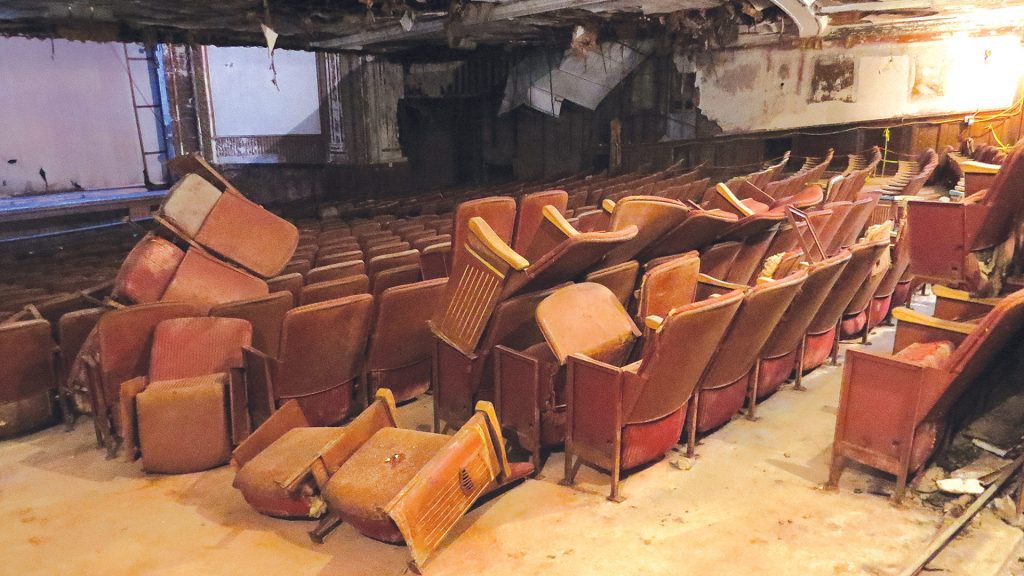
The Victory Theatre closed in 1979 and hasn’t seen much light since then.
The Victory was what’s known as a ‘legitimate house,’ said Sanders, meaning that it had the finest of accommodations and was the therefore the preferred theater of choice for many performers of that era.
“That terminology means it hosted the highest level of shows and was a theater that was the best-equipped, had the best dressing rooms, etc., etc.,” he said, adding that Holyoke didn’t have a ‘legit house,’ and its leaders were determined to build one.
Fast-forwarding through the history of the Victory, Sanders said its fortunes mirrored those of the city. As the paper and textile mills that enabled Holyoke to boast one of the highest per-capita income rates in the country a century ago began to move south and then eventually offshore, the theater and the area around it started to decline, and the Victory eventually became a movie house.
As the trend in movie theaters shifted to smaller facilities in large complexes with multiple screens, its fortunes faded further until it ultimately closed. After it was taken for non-payment of taxes in the early ’80s, there were various efforts to restore the landmark, said Sanders, adding that, in all cases, the money needed — $9 million maybe 30 years ago and then progressively higher figures as the scope of the work increased — could not be raised.
In 2005, an item came before the Holyoke City Council to raze the Victory Theatre, he said, adding that he lobbied that group to stay the execution, arguing that such a vital landmark — and potential economic-development engine — should not be lost to the past.
The council listened, he said, and the Victory lived to fight another day.
To the casual observer, meaning those who haven’t been in for a tour, the facility seems frozen in time and unchanged. But that’s not the case, said Sanders, noting that a number if improvements have been undertaken over the years to ready the theater for restoration.
Steps have included asbestos removal, installing a new roof, converting the gas utility to electric (a project still underway), restoration of historic murals located near the stage, replacing non-compliant window coverings with new polycarbonate clear coverings, and other initiatives that together total nearly $5 million.
Overall, the structure is very sound, noted Sanders, adding that no expense was spared in building it.
Victory Is in Sight
To bring a project like the Victory Theatre to a successful result, a number of elements have to come together, Palmer said. These include leadership, a commitment from the community, funding, of course, and sometimes a little luck.
In the case of the Victory, the luck, if one chooses to call it that, comes in the form of ARPA money in the wake of the pandemic, funds that are expected to close most, but not all, of a $5 million to $6 million gap between the $58 million needed for the project and what has been raised through various means, including historic tax credits and new market tax credits; private, individual, corporate, and foundation donations; and public grants.
“ARPA money is what helped this project turn the corner,” Palmer explained, adding that the federal government has released $350 billion in funds to individual cities and states, and those working on the Victory Theatre project are currently working with several lobbyists to position this initiative for a $12 million ARPA allocation.
“It hasn’t happened yet … it’s coming in dribs and drabs, pieces here, pieces there,” she said, adding that the ARPA funds will constitute roughly half of what still needs to be raised for the project.
The rest will be raised locally, she said, adding that $7.5 million has been pledged, and there are plans for a community effort with a goal of raising $2 million.
Local fundraising will include mostly smaller donations, Palmer said, but that grassroots effort, which will involve phone calls, knocking on doors, letter-writing campaigns, and fundraisers and friendraisers of all kinds, will bring area residents and businesses into the fight to restore the theater, and it will send a strong message to elected leaders about the importance of the initiative — to the city and region as a whole.
Mayor Garcia agreed, and noted again the importance of the project, not just from the standpoint of the arts, as significant as that is, but to the proverbial big picture in Holyoke and the region.
“The Victory Theatre checks off a lot of boxes,” he said. “When we think of what we’re trying to do in our city, in our downtown, in terms of tourism and economic development, this is just another piece of the greater economic system puzzle that we’re trying to solve here.”
Elaborating, he said the theater cannot exist in a vacuum, and there must be an infrastructure of supporting businesses — restaurants, bars, and other hospitality-related ventures — to make a revitalized Victory Theatre succeed.
Palmer concurred, and to explain, she did some math.
“When the theater opens, it’s going to be substantial — there are 1,600 seats in there,” she said. “The average occupancy, or utilization, rate of any nonprofit regional theater on any given night is 65%, so there will be 1,100 people bopping around that neighborhood several times a week. Right now, there aren’t many things to do, and certainly not enough to accommodate 1,100 people.
“So, there’s a parallel effort we’re working on to make sure, when the theater opens its doors, that the ancillary economic benefit will be ready to go,” she went on, adding that city officials and the strike force are working to help make sure that there is an infrastructure in place to support the theater.
Meanwhile, work continues to build on the current momentum and convince the public that there is a path to getting this done, said Aaron Vega, Holyoke’s Planning director, adding that more than 40 years of waiting for action on the property has created some stubborn skepticism that still must be overcome.
“It does take a long time for these projects to happen, and there has been work done,” he said. “Unfortunately, it’s not visible from the outside; people drive by and say, ‘it looks the same as it did 10 years ago or 20 years ago.’ Overall, we need to reinstill some energy and some trust that this project is real.”
The bus trip to Schenectady and the Proctors arts complex was part of this larger effort, said Vega, noting that Schenectady and Holyoke are very similar in that they were both devastated by the loss of large employers (in the former’s case, it was General Electric). And their respective restoration projects are similar as well in that they involved long periods of time and a deep commitment from the community.
“One of the reasons we took that trip is to have people be able to come back and tell the story of what a theater like this could do for Holyoke, obviously, but also the entire region,” he said, adding that these discussions are now being had, generating what he and others expect will be more momentum.
And momentum not just for theater, he said, but what can come because of such a facility.
“I’m hoping that people can see the spinoff,” he explained. “The new restaurants, the buildings that were unoccupied being reoccupied — that’s the thing we want to see, the spinoff and the ripple effect; that’s what is going to affect everyone, not just those who will go to the theater.”
Bottom Line
Returning to the subject of those tours he has given — and will continue to give — Sanders said they do more then enlighten. They also educate and inspire those who take them.
In most all ways, they are better than a marketing brochure, better than talking to someone about the history and importance of this landmark.
“It’s our biggest selling point; it’s much better than me saying, ‘we have the last Broadway house in the region,’” he noted. “People walk through the door, they see 800 seats and the stage … and they realize what a treasure this is.”
It’s been 43 years since this treasure was anything more than a piece of history, but if all goes well — and things are tending in that direction — it will soon be an important piece of the future.
George O’Brien can be reached at [email protected]







